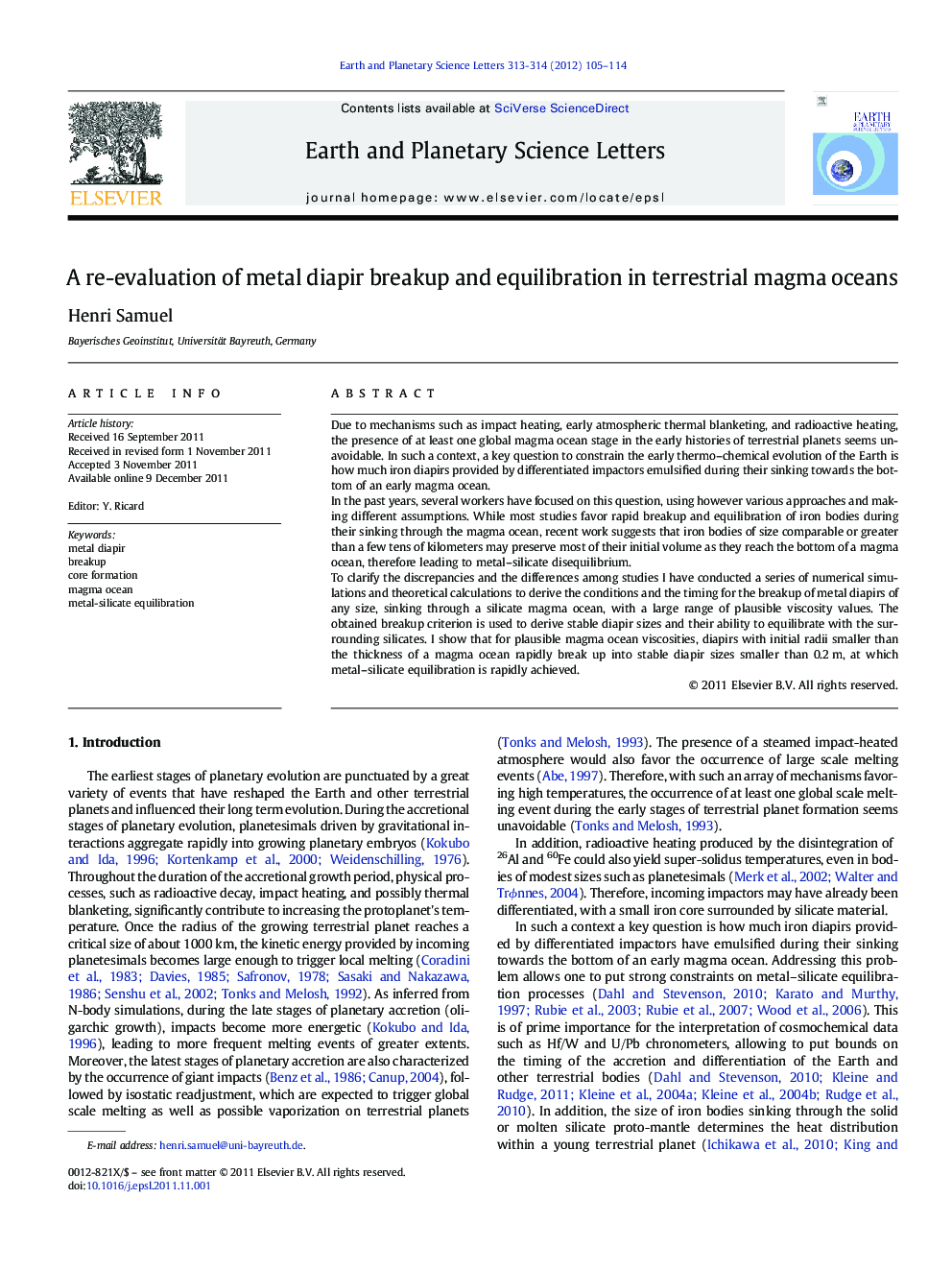| کد مقاله | کد نشریه | سال انتشار | مقاله انگلیسی | نسخه تمام متن |
|---|---|---|---|---|
| 4677672 | 1634814 | 2012 | 10 صفحه PDF | دانلود رایگان |

Due to mechanisms such as impact heating, early atmospheric thermal blanketing, and radioactive heating, the presence of at least one global magma ocean stage in the early histories of terrestrial planets seems unavoidable. In such a context, a key question to constrain the early thermo–chemical evolution of the Earth is how much iron diapirs provided by differentiated impactors emulsified during their sinking towards the bottom of an early magma ocean.In the past years, several workers have focused on this question, using however various approaches and making different assumptions. While most studies favor rapid breakup and equilibration of iron bodies during their sinking through the magma ocean, recent work suggests that iron bodies of size comparable or greater than a few tens of kilometers may preserve most of their initial volume as they reach the bottom of a magma ocean, therefore leading to metal–silicate disequilibrium.To clarify the discrepancies and the differences among studies I have conducted a series of numerical simulations and theoretical calculations to derive the conditions and the timing for the breakup of metal diapirs of any size, sinking through a silicate magma ocean, with a large range of plausible viscosity values. The obtained breakup criterion is used to derive stable diapir sizes and their ability to equilibrate with the surrounding silicates. I show that for plausible magma ocean viscosities, diapirs with initial radii smaller than the thickness of a magma ocean rapidly break up into stable diapir sizes smaller than 0.2 m, at which metal–silicate equilibration is rapidly achieved.
Journal: Earth and Planetary Science Letters - Volumes 313–314, 1 January 2012, Pages 105–114